Google Chrome is a fast, intuitive, and secure browser built for the modern web. However, because it is not open-source software, it is not included by default in almost any Linux distribution and is usually unavailable for installation from their official repositories.
This is precisely the case with Debian, which strictly adheres to using only open-source software and ships with Firefox by default.
In this guide, I will show you two easy-to-follow ways to install Google Chrome on Debian 11 (Bullseye), so you can start browsing the web with your favorite browser in no time. Choose the one that is the easiest to implement for you.
However, if you’re using Debian 12, check our comprehensive and easy-to-follow “How to Install Google Chrome on Debian 12 (Bookworm)” guide.
Method 1: Installing Google Chrome on Debian 11 from DEB File
Step 1: Download the Google Chrome Linux Installer
Visit the download page for Google Chrome by clicking here or copying and pasting the following address in the browser you are currently using: https://www.google.com/chrome/. Then, hit the “Download Chrome” button.
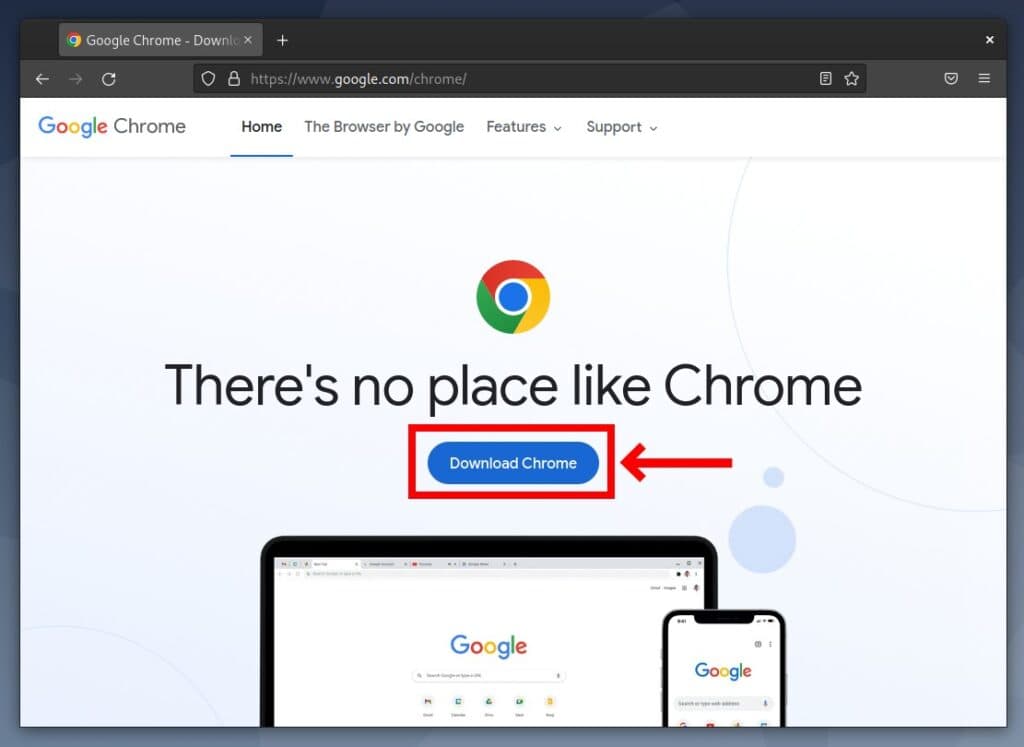
Next, select the “64-bit .deb (For Debian/Ubuntu)” download package option and confirm by clicking the “Accept and Install” button.
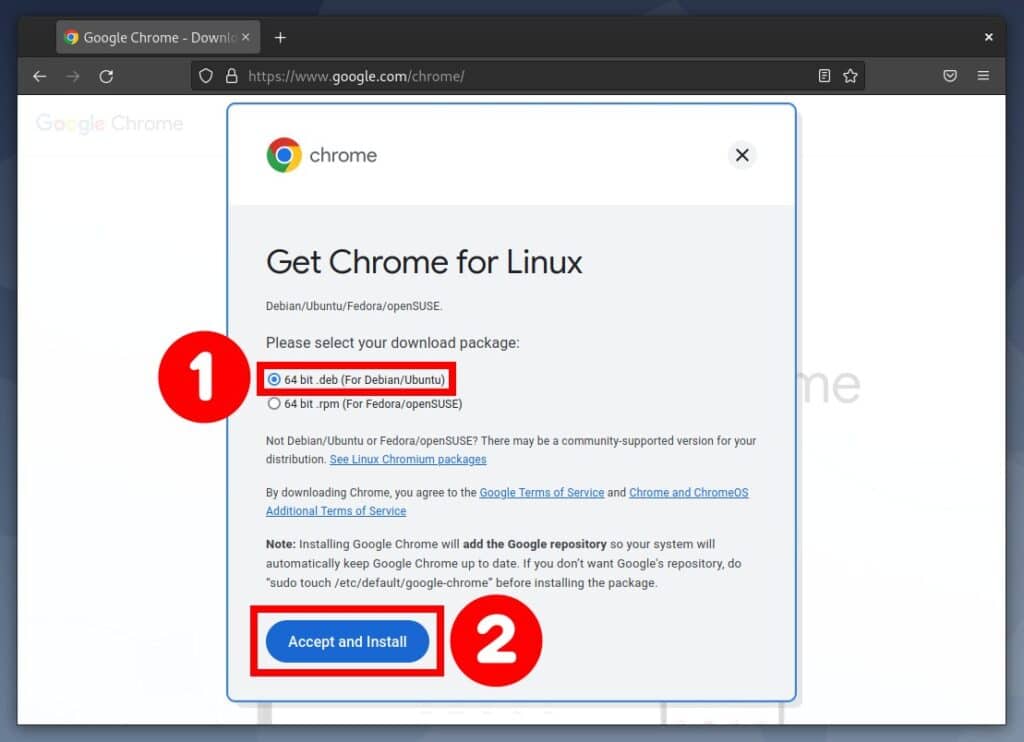
Step 2: Installing Google Chrome on Debian 11
Once the download is complete, please navigate to your downloads directory, find the Google Chrome DEB installation package (google-chrome-stable_current_amd64.deb), right-click on it, and choose the “Open With Other Application” option.
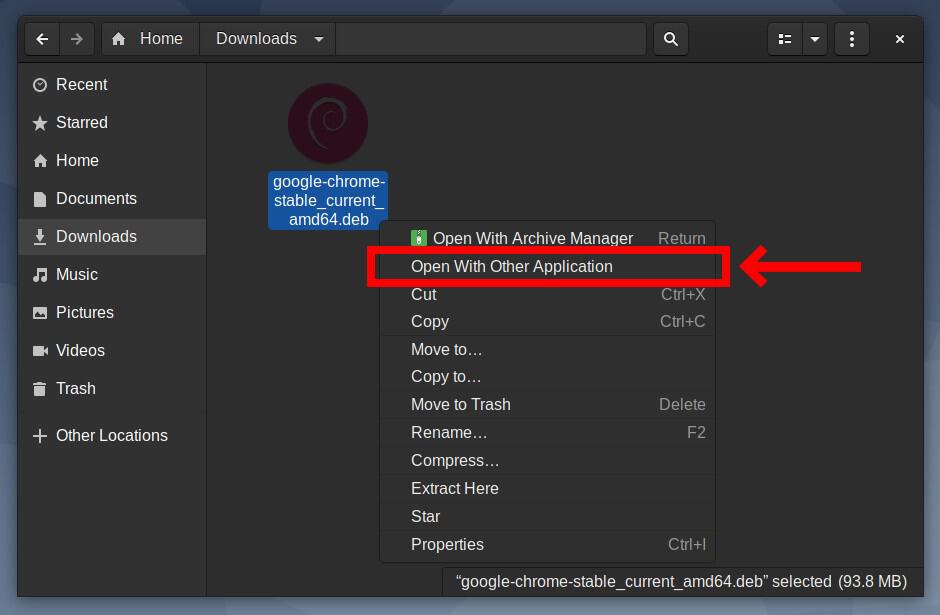
Highlight “Software Install” in the new window that appears and confirms by hitting the “Select” button.
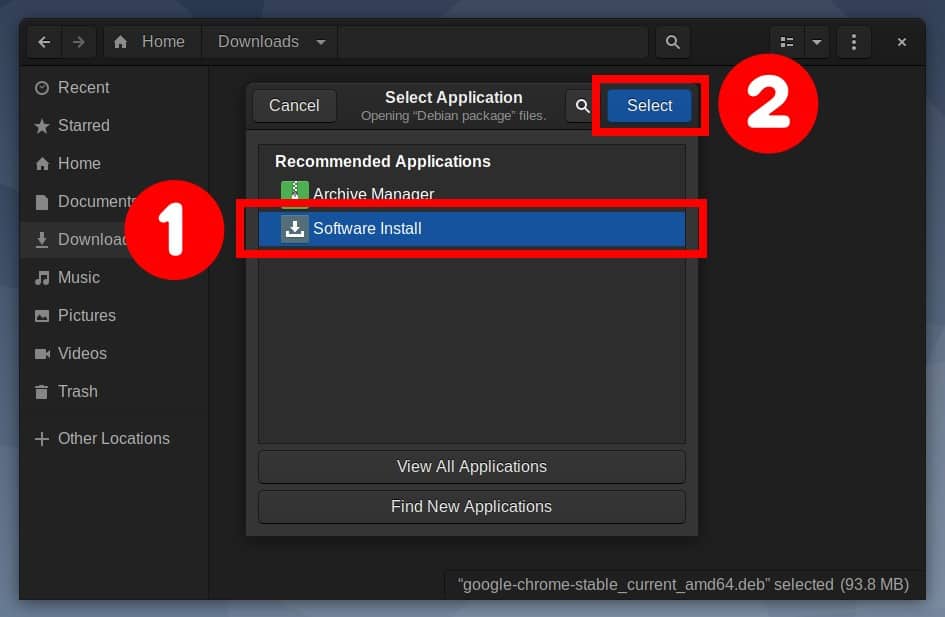
The file will open in the Software app so that you can install it. Click the “Install” button to begin the installation.
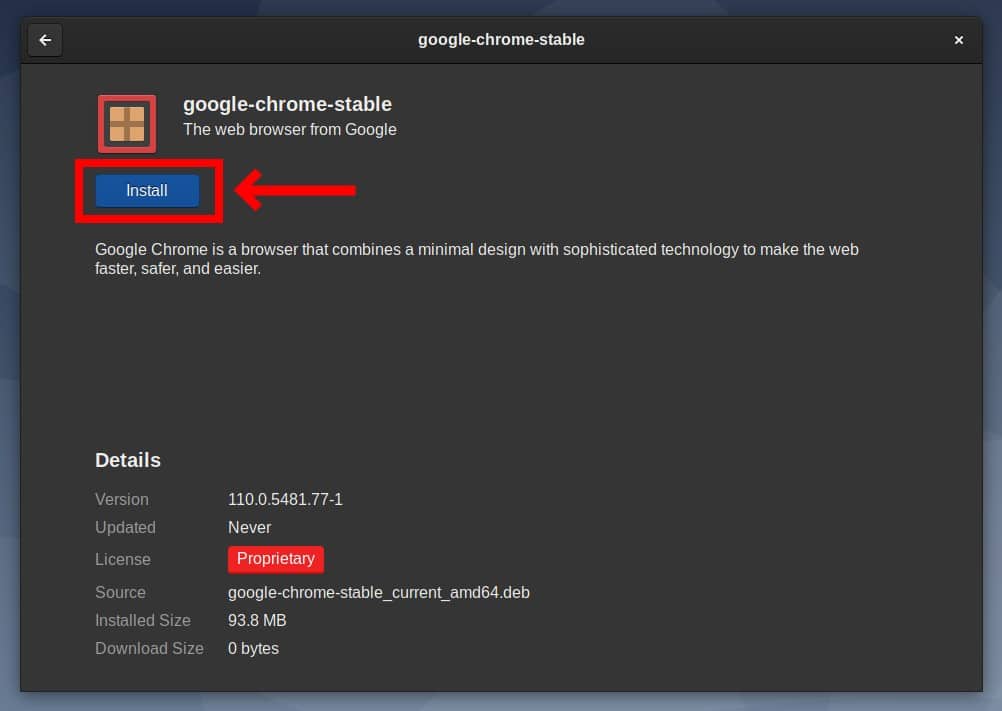
Enter your user password when prompted and hit “Authenticate.”
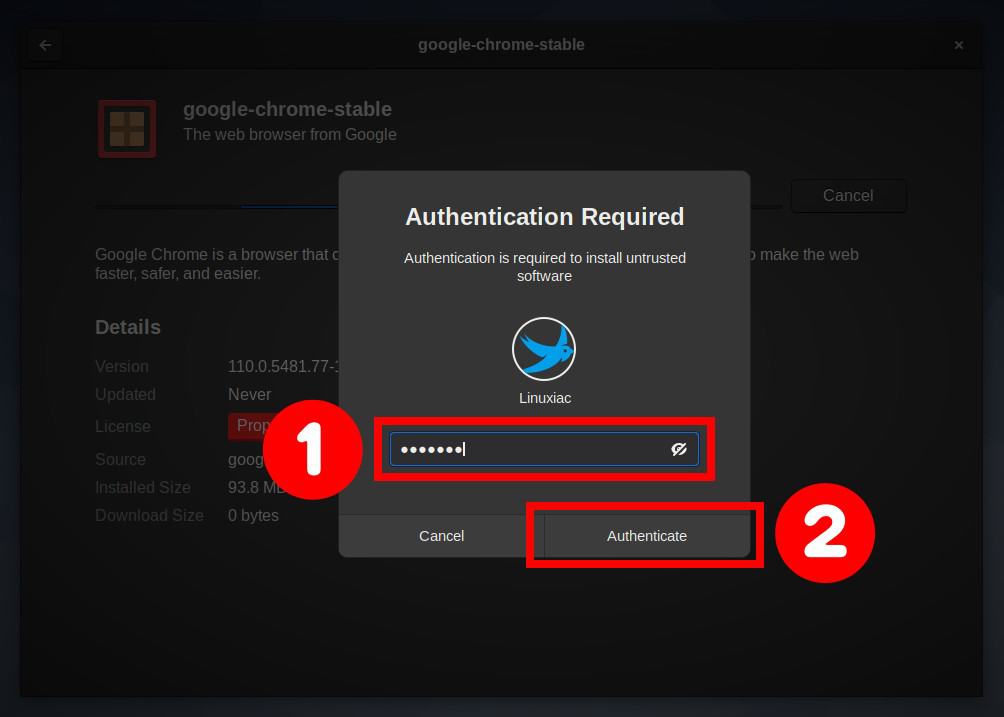
The progress bar lets you know when the Google Chrome browser has finished installing on your Debian 11 system.
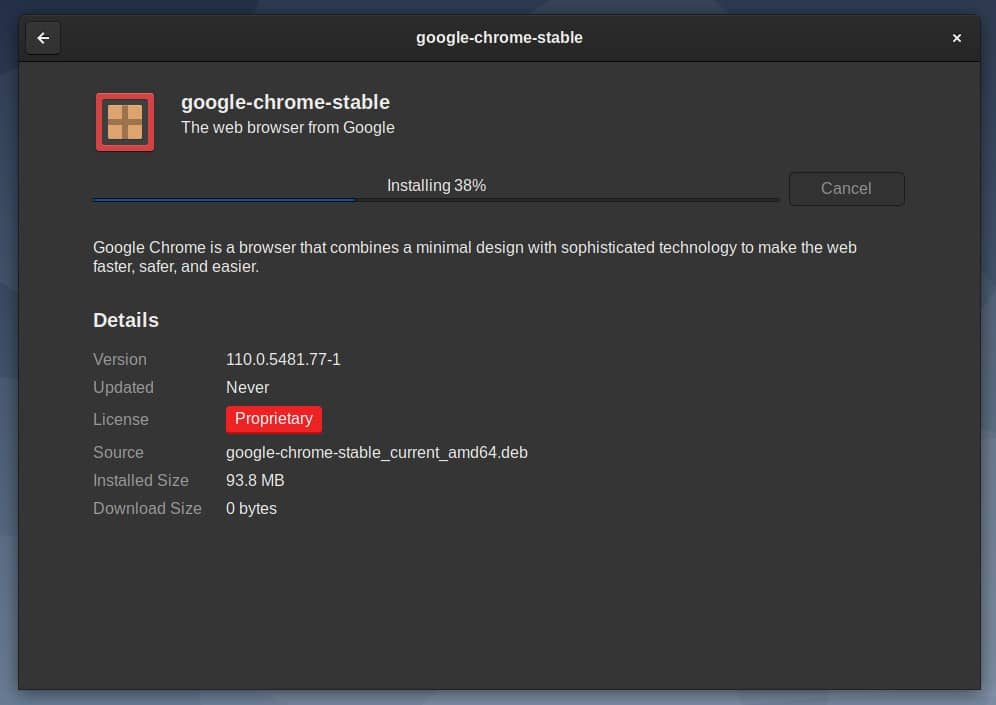
The process usually takes up to 30 seconds. So please wait for it to complete. Then you can safely close the window.
Step 3: Launch Chrome Browser
That’s all! Once installed, you can launch it from the application menu and enjoy it. Type “chrome” and click on the icon when it appears.
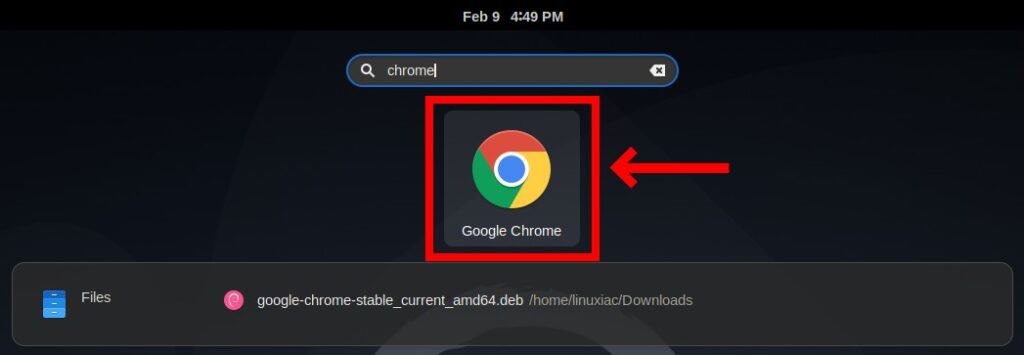
The first time you start Google Chrome, you’ll have the chance to make Google Chrome your default browser. You can also choose to “Automatically send usage statistics and crash reports to Google.” It is up to you whether you want to enable this or not.
Make your choices, and then click the “OK” button.
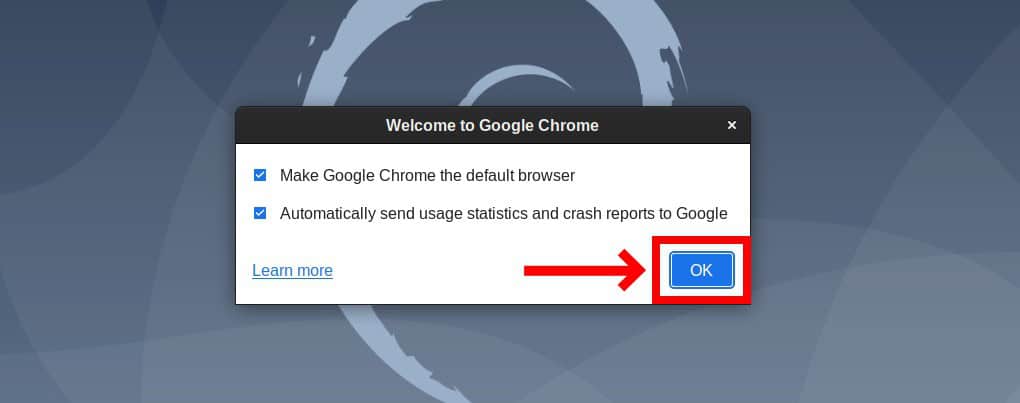
Google Chrome will start. Enjoy it!

Method 2: Installing Google Chrome on Debian via Command Line
I’ll show you the second way to install Google Chrome on Debian 11, which is entirely command-line-based. This approach is way faster, so if you’re not afraid to dive into the Linux terminal, follow the steps below, and you’ll be greeted with a successful result in minutes.
Step 1: Download and Import Google’s Signed Key
To ensure that the packages we receive to install the Chrome browser are genuine, first, we should download and import the Google signed key on your Debian system.
To do so, type the following two commands:
wget -q -O - https://dl-ssl.google.com/linux/linux_signing_key.pub > linux_signing_key.pub
sudo install -D -o root -g root -m 644 linux_signing_key.pub /etc/apt/keyrings/linux_signing_key.pubCode language: JavaScript (javascript)
Notice that neither command produces any output.
Step 2: Add Google’s Chrome Repository
After importing the package signing key, you must add the official Google Chrome repository to your Debian 11 system. This implies that the update package will be made available with the rest of our system’s regular updates when a new version is released.
Type the command shown below.
sudo sh -c 'echo "deb [arch=amd64 signed-by=/etc/apt/keyrings/linux_signing_key.pub] http://dl.google.com/linux/chrome/deb/ stable main" > /etc/apt/sources.list.d/google-chrome.list'Code language: JavaScript (javascript)
Step 3: Run System Update
Before installing Google Chrome on your Debian system, you should update the packages list. So, run the below command to update the APT repositories index.
sudo apt update
As you can see, your new Google Chrome repository is now available and ready to be used.
Step 4: Install Google Chrome on Debian 11 (Bullseye)
Everything is already prepared for the actual installation. Now, to install Chrome on your Debian system, run the following command:
sudo apt install google-chrome-stable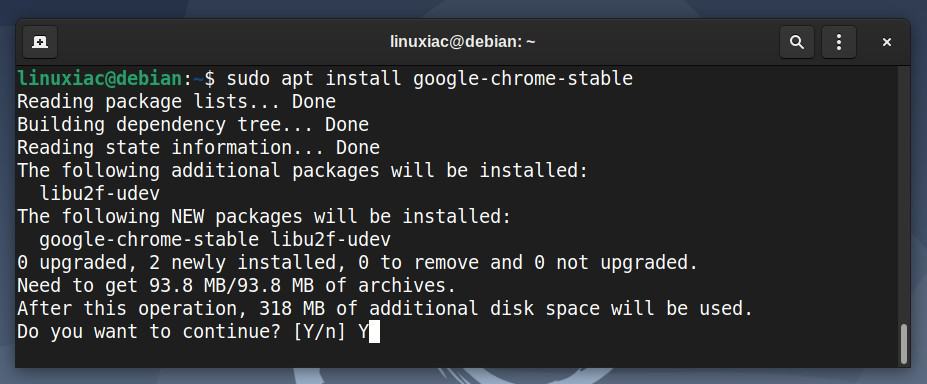
Once installed, launch the Chrome web browser from the GNOME dash and enjoy it.
Uninstall Google Chrome
If you decide to remove the Google Chrome browser from your Debian system for some reason, you can do it quickly and easily by typing the command shown below:
sudo apt purge google-chrome-stable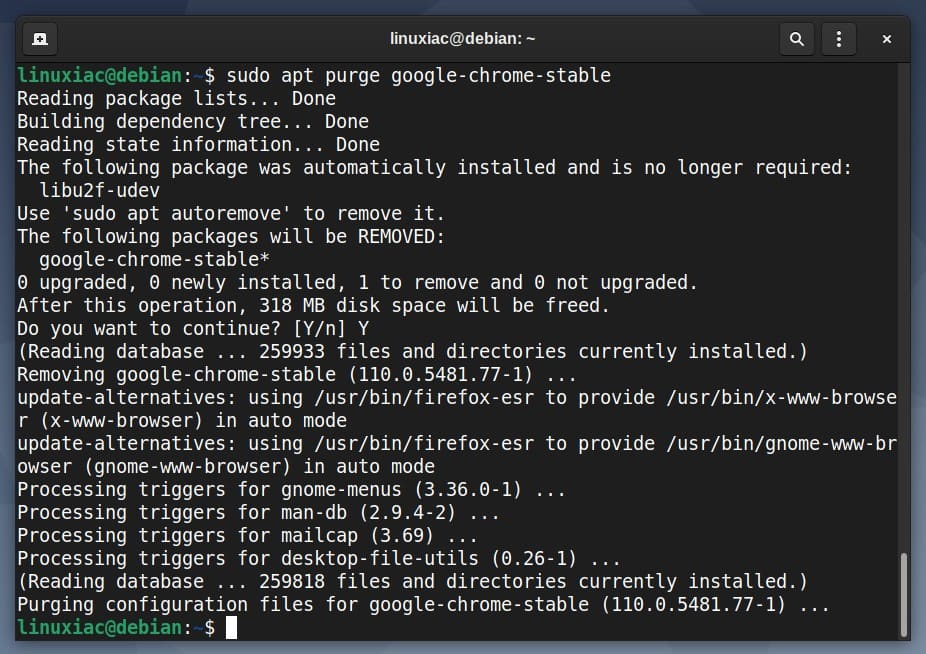
Conclusion
This guide shows you two ways to install one of the world’s most common web browsers, Google Chrome, on Debian 11 (Bullseye). So choose the one that feels the most comfortable and simple for you to implement.
In addition, once Chrome has been installed on your Debian system, you can add Chrome extensions and your favorite themes from the Chrome Web Store.
It is important to note that the installation process adds Google’s Chrome official repository to your system, so the browser will receive the latest updates automatically whenever you update your system via the Software app or command line.
Thanks for your time! I hope you find this guide useful. Your feedback and comments are most welcome.
